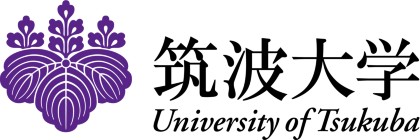Deciphering the structures of proteins is critical to structural drug design. Cryo-electron microscopy (cryo-EM) now offers a radically different way to study the structure of large biomolecules without the need to fabricate crystals.
Protein structure has been conventionally studied using X-ray crystallography and nuclear magnetic resonance (NMR) spectroscopy. However, with X-ray crystallography, proteins must be crystallized before study, and NMR only allows the analysis of proteins with low molecular weight.
Researchers at the University of Tsukuba in Japan are now using cryo-EM to analyse previously unobservable biomolecular structures that could accelerate cancer research and drug development. Among them, structural biochemist, Kenji Iwasaki, has a very personal reason for his interest in this area.

Structural biochemist, Kenji Iwasaki, used cryo-EM to understand the structure of a protein in an effort to find better cancer treatments.
Cryo-EM emerged following decades of advances in detector technology, software algorithms and data processing. Nature Methods selected cryo-EM as the ‘Method of the Year’ in 2015 — and in 2017 the Nobel Prize in Chemistry was awarded to Jacques Dubochet, Joachim Frank and Richard Henderson for “developing cryo-electron microscopy for the high-resolution structure determination of biomolecules in solution,” according to The Royal Swedish Academy of Sciences.
One disease for which cryo-EM could help with drug development is synovial sarcoma, a rare cancer that affects soft tissue around joints such as the knee, wrist or ankle. The abnormal protein that causes it is an ‘intrinsically disordered protein’ called SS18-SSX. Due to its convoluted structure, analysis of SS18-SSX has proved challenging using both traditional techniques and cryo-EM.
Synovial sarcoma
“However, we know that SS18-SSX has a partner to which it binds,” says Iwasaki at the Life Science Center for Survival Dynamics, Tsukuba Advanced Research Alliance (TARA) at the university. “We created a complex with this partner protein, and we could then use cryo-EM to elucidate this structure.” This achievement marks an important step on the road to drug development, which Iwasaki envisions may take five years or more.
“I first became involved in this cancer research after my wife was diagnosed with a rare and hard to treat cancer, synovial sarcoma,” Iwasaki explains. “I asked my doctor, who was then an assistant professor at the Osaka University School of Medicine, to allow me to conduct joint research; I received a synovial sarcoma driver gene from him, brought it back to the University of Tsukuba and began my research.”
Future challenges are to further explore the mechanisms underlying synovial sarcoma, screening candidate compounds, and eventually developing a drug.
This will involve collaborating with other researchers at the university including computer simulation specialist, Takatsugu Hirokawa, geneticist, Satoru Takahashi, and Masahito Yoshida, who is honing techniques to synthesize more effective drugs. Other key collaborators are at the University of Tokyo and researchers and Osaka International Cancer Institute.
There are many other cancers similarly caused by disordered proteins, meaning that cryo-EM could bring hope for sufferers of these too. “We will continue our research on targets that are usually difficult for structural scientists to reach,” says Iwasaki.



 Nature Index Japan 2023
Nature Index Japan 2023
 Japan’s start-up star
Japan’s start-up star